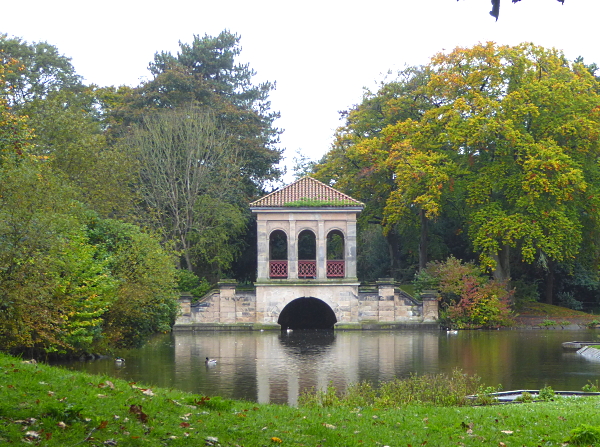
Birkenhead Park was opened in 1847, and is the world’s first publicly-funded civic park, open to all. It is said to have inspired New York’s Central Park, and is a Grade I listed landscape. It’s over two years since we were last there. In light rain we walked down from the massive arched Grand Entrance, looking at the gulls on the muddy field on the left: Black-headed Gulls, Common Gulls, a few young Herring Gulls, one or two Lesser Black-backed Gulls and a few Magpies beyond. The droopy evergreen there is a Brewer Spruce, I think.
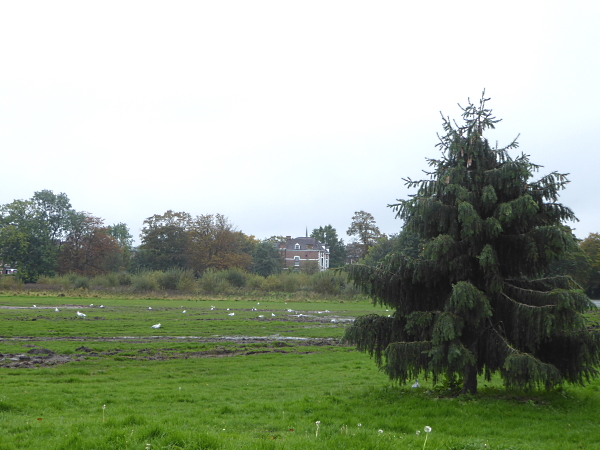
Many of the red-berried trees have fruited well this autumn, especially the Hollies and Yews. Several birds were after the Yew berries, including a Great Tit, a very fast and elusive Goldcrest and a Mistle Thrush at the top of a neighbouring Beech. There isn’t much autumn colour yet. The Limes are going yellow, the Horse Chestnuts are brown from the leaf miner infection, but there is still lots of green. We made an anti-clockwise circle around the lake, seeing only the ubiquitous Pigeons, Mallards, Moorhens and Coots. A bit more exciting was a Treecreeper. Some of the trees bore bat roosting boxes, and there are said (in the poster in the Visitors’ Centre) to be five species of bat here, although they weren’t named. We looked at the Mulberry tree, but there was no fruit left on it. At the west end of the Lower Lake, just past the rockery corner, is one of the park’s star trees, the Cucumber Tree Magnolia accuminata, with its huge leaves hanging over the path, at least a foot (30cm) long.
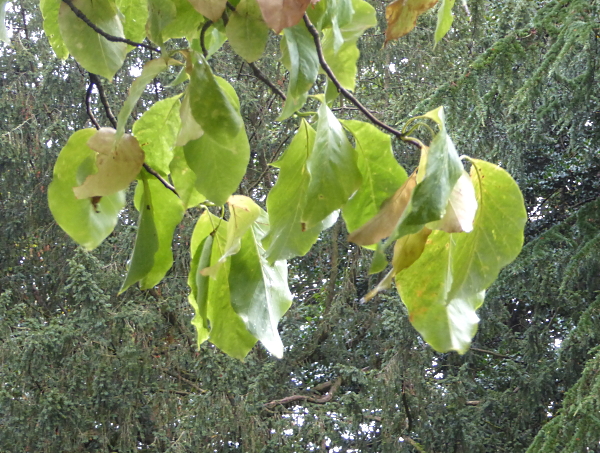
There’s a Monterrey Cypress by the Swiss Bridge, with large clusters of scaly woody fruits.
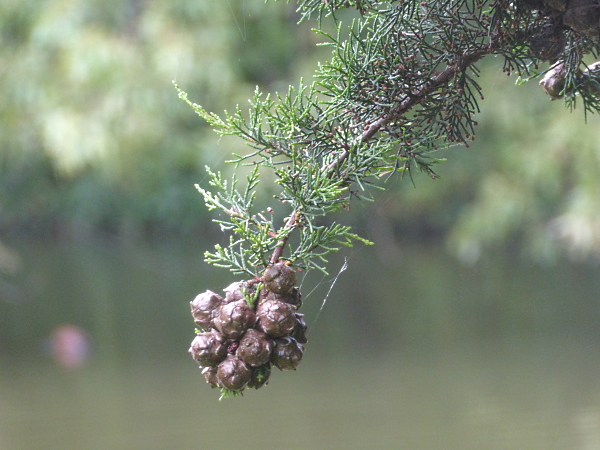
We looked at an interesting tree over the water, on the south east side of the lake. It’s only a small one, with bluey green compound leaves and rounded leaflets. The leaflets are the wrong shape for a Pagoda tree, so it is possibly a Locust tree, a False Acacia, Robinia pseudoacacia. Mitchell’s tree book describes the leaves as greyish green, so that might be it.
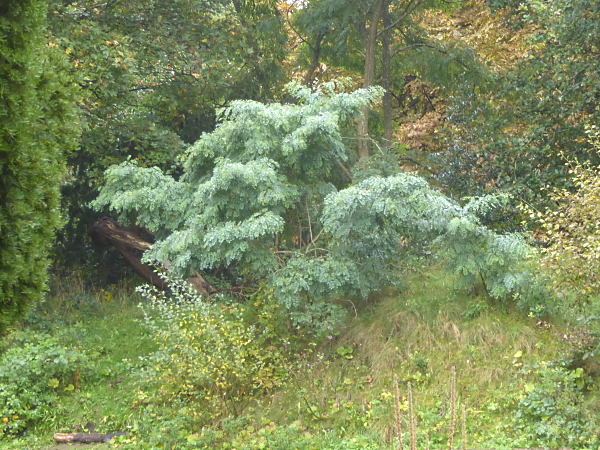
By the bridge at the north east end of the lake we checked to see if there were any survivors of the distinctive brood of five tall thin black Mallards, which we first saw in November 2011. In August 2017 we found one still alive on the other side of the park, but we didn’t see it today. But there was a family of Mute Swans with three big brown cygnets, several Canada Geese and a Cormorant.
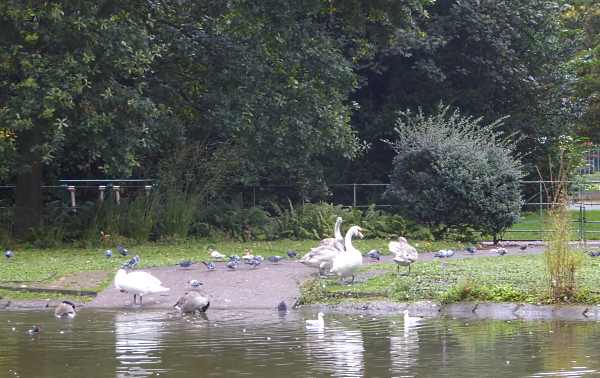
Behind the Visitors’ Centre was a very strange wooden structure, labelled sternly “not a playground or a toy”, so I think it must have been Art.
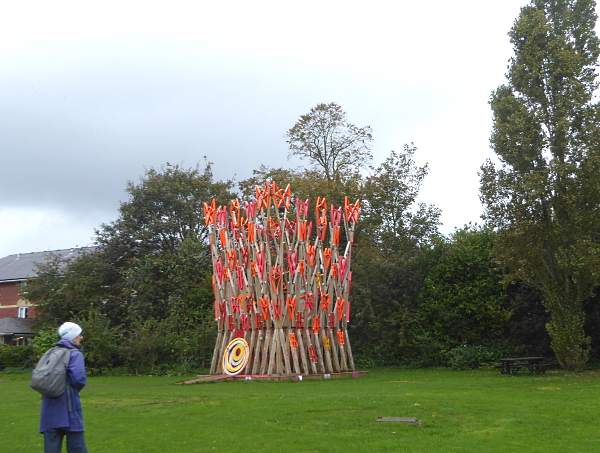
In the far corner was a glade full of little fairy houses.
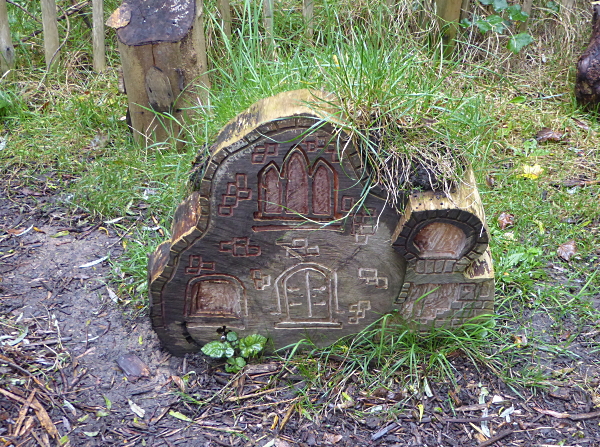
On some old branches left on the grass nearby to decompose were some interesting small fungi. Some were chalk-white flat ones with a hint of a stalk, maybe 1cm across. They looked like little white flowers. My friend Google Images suggests they might be Plicatura crispa (no common name), which is more usually found in Scotland, or northern English counties. The most southerly report is from Richard Fortey, (yes, THAT Richard Fortey), from a wood in Oxfordshire.
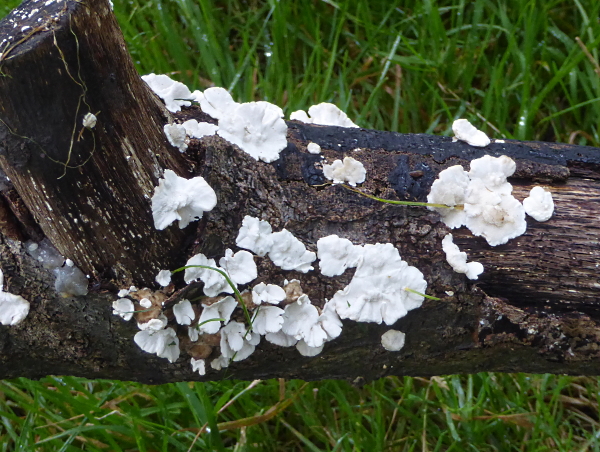
Further along the same log were some small bracket-types, again about 1cm, with white edges, fawn gills on the top side, and smooth below. The log didn’t appear to have been turned or moved recently, so that’s the way they had grown. Back to my friend Google Images, which suggests they are Split Gill Schizophyllum commune, which is common and widespread.
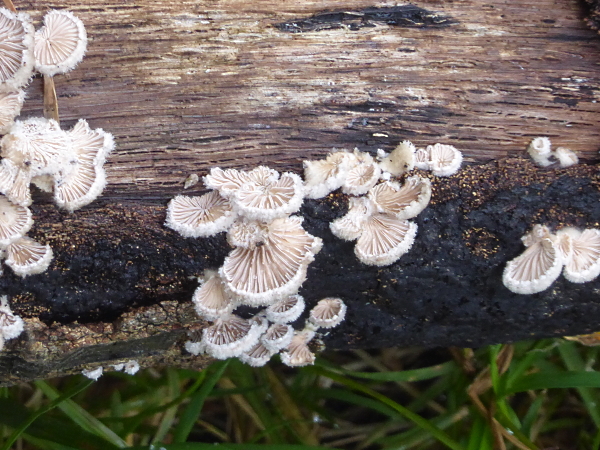
We found a Spindle tree in a shrubbery on the west side of the Visitors’ Centre, its four-sided red seed cases opening to reveal the hard round red seeds inside, one to each section. Later, on the way back to the station, we noted another of the Park’s star trees, the Hybrid Strawberry Tree inside the fence by the traffic lights, with dark evergreen leaves and red peeling bark. But before that it had started to rain hard, so we retreated to the Visitors’ Centre for shelter, spotted their table tennis table, asked at the desk and were entrusted with some bats and balls. It’s a long time since any of us have played table tennis. We found that we could serve as we used to, but the return strokes went all over the place!
Public transport details: Bus 437 from Sir Thomas Street at 10.19, arriving Park Road North / Park Road East at 10.35. Returned on the train from Birkenhead Park station at 14.36, arriving Liverpool 14.55.
